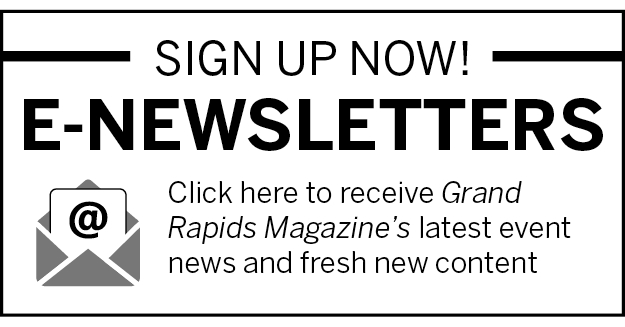Roughly 25 years ago, “The Freshman” was climbing the charts and turning into one of the iconic hits of the 1990s.
That hit came from West Michigan. The Verve Pipe’s smash song is perhaps the biggest success to come from the region, but with it came a whole host of other successful artists, from the likes of Papa Vegas and Knee Deep Shag to Troll for Trout, Karmic and Mustard Plug. The 1990s were a hot time for local music in Grand Rapids.
It’s an achievement the area hasn’t seen since, but that’s likely in part because that success hasn’t been seen by a lot of local areas. The music industry has changed greatly in the past 25 years, mostly due to a shift in listening habits and the world of internet culture where music fans learn their next hot act from Spotify recommendations or social media.
For those bands of the 1990s, there was no other choice than to become a star.
“You were being spoon-fed rock stardom by MTV and the radio,” said Joel Ferguson, the lead singer of Papa Vegas, which saw “Bombshell” rise to No. 20 on the Billboard Modern Rock chart in 1999. He’s now the owner of Planet Sunday Studios in Rockford. “It was just such a huge part of people’s lives.
“Now, it’s option overload with streaming services and it’s no longer a handful of picked artists by a label. There’s just everything under the sun now, whereas maybe there were three to five niches back then and you had to get on board. There was just way less choice.”
Back then, bands would support each other, pushing fans to one another’s shows, said Brian Vander Ark, the lead singer of The Verve Pipe. Vander Ark said Michigan’s buzz notched up when bands kept ordering CDs, so the manufacturers were wondering what was happening in town. That’s when the major record labels started “sniffing around” West Michigan, he said.
“All of these bands were in a pocket in the Midwest and really supportive of each other,” Vander Ark said. “It started in Seattle — that was really the beginning — but local music was about going to see each other and getting each other gigs.”
Since then, the rise of the internet has vastly altered the world of music. Gone are the days listeners found the next hit by listening to a local radio station or looking up concerts in that week’s entertainment calendar in the Grand Rapids Press. Flyers for the weekend’s shows no longer plaster the sides of telephone poles and bulletin boards across town.
Artists now must push forward in a more digital way to get their names — and music — out to potential fans. Albums, while easier than ever to produce, no longer are a primary source of music and promoting them at a live show is no longer a viable revenue stream. A CD also was a way to easily “legitimize” a band at one point in time.
The availability of music also caused division in the music community — for better or worse, Ferguson argues — as artists separated into more genre-based groups. Instead of 400 fans going to a single concert, 10 different shows in various genres might attract 40 people each.
Vander Ark said he thinks some of the local scene’s change happened with the opening of multiple venues that brought in national acts, beginning in the mid-1990s with Van Andel Arena. Since then, Frederik Meijer Gardens Summer Concerts and GLC Live at 20 Monroe have turned into major stops for national touring acts. Those potentially take away from the local music audience, Vander Ark said.
But those same venues also help push music in West Michigan to new levels. Ferguson said there are plenty of times when those national acts bring in local bands to open, providing an opportunity like no other.
Longtime West Michigan entertainment writer John Sinkevics said Van Andel Arena helped spur a mass opening of venues hosting local music in downtown, including the move of The Intersection from Eastown to its current location near the arena.
“(Van Andel Arena) popped up and sort of changed the character of downtown and made it a center for the region. It opened the eyes to the potential of what would happen,” Sinkevics said. That statement came with a caveat about the pandemic, however, as many local venues have yet to resume local music as they struggle with money coming out from the shutdowns.
Sinkevics is preparing to celebrate the 10th anniversary of his publication, Local Spins, which he started after a long career at the Grand Rapids Press. Local Spins is an invaluable source to help promote the local music scene. It has grown into an engine for the artists of West Michigan and those looking to support them. He highlights major acts that have developed into national names that still call Michigan home, like Billy Strings, Lord Huron and The Accidentals.
The 10th anniversary celebration stretches across six venues in Grand Rapids, culminating in a May 21 outdoor concert at Studio Park. The week will showcase more than 20 Michigan artists. It’s all a testament to the publication Sinkevics built, but also to the scene that he watched grow and helped turn into what it is today.
“I’ve seen the changes and ups and downs that happened,” Sinkevics said, looking back at his lengthy tenure covering the West Michigan music scene.
For him, the pandemic threw a major wrench in the growth trajectory of the local music scene. In Sinkevics’ estimation, the industry was about to have a record year in 2020. From his own publication to the music venues in town, every aspect of Grand Rapids music was humming. Then the pandemic rolled in.
“When March hit, the rug got pulled out from everyone,” he said. “Grand Rapids and this region were poised to become another version of Austin or Seattle, because it’s a collaborative music scene. That’s one thing I’ve noticed, is a lot of bands support each other and collaborate musically where a lot of other markets are disjointed.”
With that in mind, he said, there will be more than 60 music festivals across Michigan this summer that help make the state a draw for bands from across the country and an opportunity for them to realize West Michigan is a place to be for artists.
That said, the music world does seem to be cyclical. The 1990s were a time of great collaboration for the alternative rock bands, Vander Ark said, which helps explain why bands like The Verve Pipe and Papa Vegas could have mega hits. While today’s West Michigan scene has its merits and is thriving in its own right, a recent Facebook post by Sinkevics asking, “What once-popular West Michigan band would you most like to see reunited?” resulted in more than 300 comments, with many recalling local bands from the late 1990s and early 2000s.
In the early 1990s, bands were expected to play lengthy sets full of covers at venues, maybe slipping in an original song or two per night. Then, venues opened up to original shows. Vander Ark said The Verve Pipe could nearly make a living by doing a small monthly circuit around college towns Michigan, driving from Grand Rapids to Big Rapids to Mount Pleasant to East Lansing, Ann Arbor, Detroit and Kalamazoo.
Now, many venues are back to cover sets, unless they’re specifically music-first establishments.
The music industry as whole will come back around, Ferguson said. All one has to do is look at the resurgence of vinyl and the fact that CD sales were up last year for the first time in nearly two decades.
“I don’t know if there’s one particular thing that will make a new scene pop,” he said. “It just has to develop. It has to develop naturally to amount to anything. Look at Nirvana. It was such a jarring change, and their music went in a different direction. You’ll always have events like that and there will be something that changes music again.”
Sinkevics said the talent in West Michigan is palpable, and as the scene continues to return to its normal pace after the pandemic, he believes it’s well positioned to again become an epicenter of music on a regional scale that rivals Austin or Seattle.
“We’re on the upswing,” Sinkevics said. “I am constantly amazed at the talent in this area. There are national-caliber bands and solo artists. Some have garnered attention and some haven’t, but it’s incredible to me to see the talent in several genres.
“The future is bright.”
This story can be found in the May/June 2022 issue of Grand Rapids Magazine. To get more stories like this delivered to your mailbox, subscribe here.












Facebook Comments